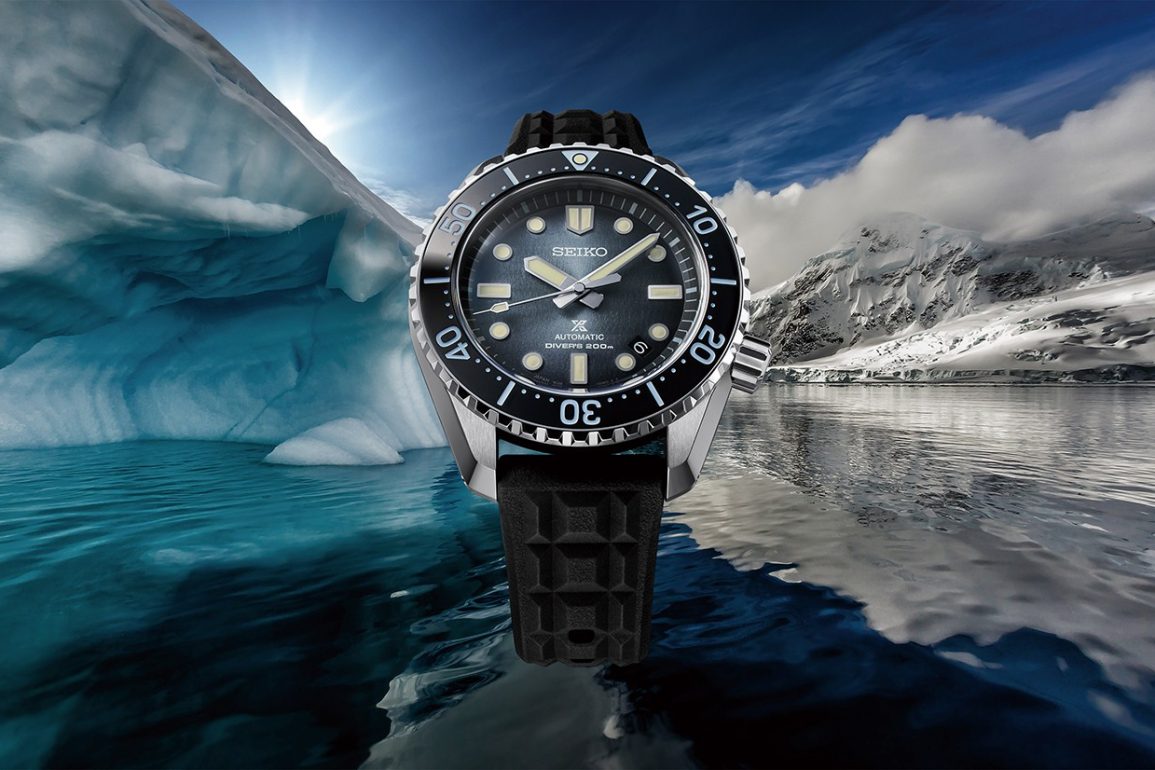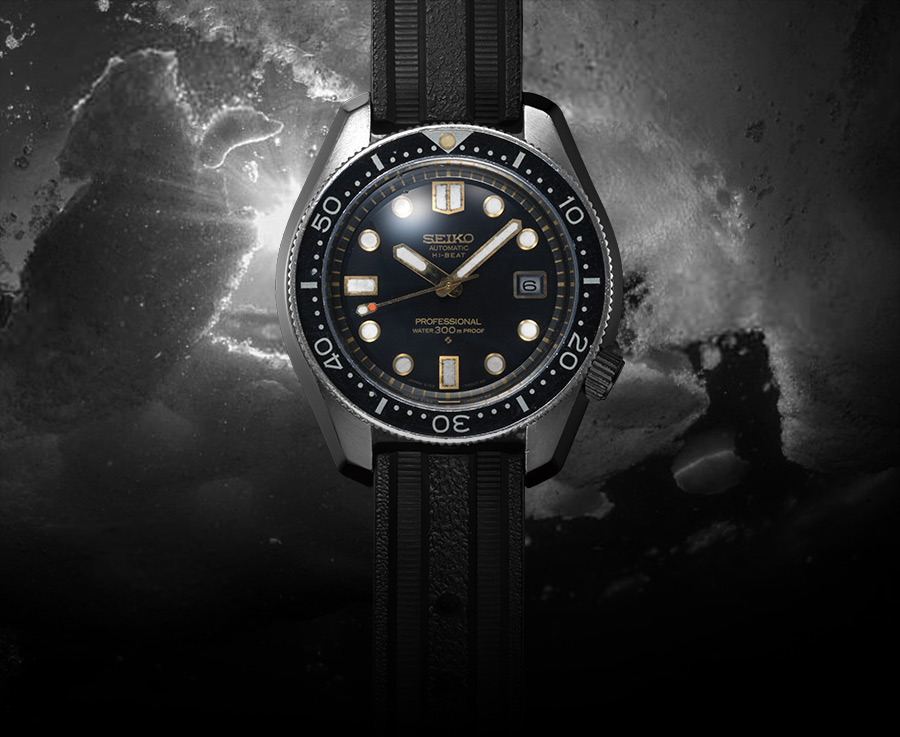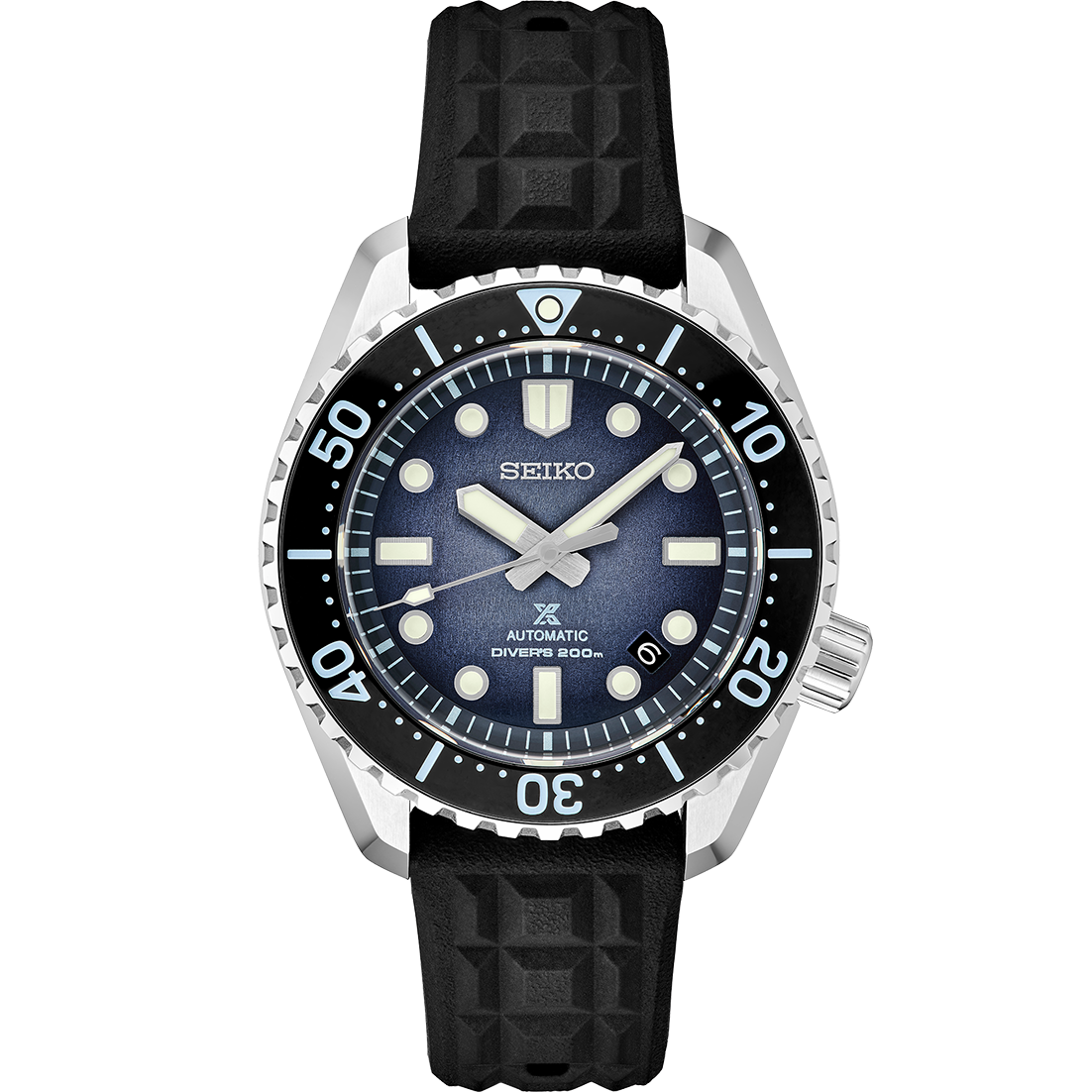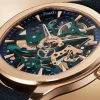BY ERIK SLAVEN
Seiko is among the most influential watchmakers in history. The Seiko Astron was the world’s first quartz watch in 1969, setting the stage for the infamous “quartz crisis” that forever altered the industry. A few years earlier, the brand launched Japan’s first dive watch in 1965, which was worn by members of the 8th Japanese Antarctic Research Expedition.
1968 original model
Seiko’s second diver in 1968 was much improved with a High-Beat automatic and 300m water resistance rating (double the 1965 model). It was the first high-beat dive watch and the one this new Prospex SLA055 is based on, but there are several differences as the “Re-Interpretation” moniker suggests.
SLA055
Although similar in appearance, the case is noticeably smaller than the original’s 44.8mm diameter and thickness of 15.7mm. This may be a good or bad thing depending on your perspective, but the new model’s dimensions of 42.6mm x 13.1mm are more suitable for daily wear. Water-resistance is now 200 meters, although only saturation divers should care. The case, bezel and crown are made from Seiko’s ever-brilliant Steel, which can be compared to 904L stainless steel for increased corrosion resistance. The crown at 4 o’clock is not screwed directly into the case, but into a separate piece that’s built into the case. This allows for easier replacement if necessary. The unidirectional rotating bezel has a ceramic insert and standard 60-minute scale with light blue Arabic numerals and marks. Finishing includes Zaratsu polished surfaces, which are distortion-free and a step above the norm. A dual-curved sapphire crystal with an inner anti-reflective coating protects the dial, while a solid screw-down case back conceals the movement.
The dial is inspired by the Antarctic landscape with a gradient blue that gets darker near the perimeter. It has a texture and color of polar ice, while the silver hands and applied indices are classic Seiko with their in-house LumiBrite (an alternative to Super-LumiNova). A date window sits between 4 and 5 o’clock. There are two strap options, starting with a black silicone with a pin buckle that’s textured to pay homage to the original from 1968. A second blue fabric strap has a traditional Japanese braiding technique called Seichu.
Powering the watch is Seiko’s in-house Caliber 8L35 automatic with 26 jewels, 4Hz and a 50-hour power reserve. It’s hand-assembled at the Shizukuishi Watch Studio in northern Japan (same as Grand Seiko). Accuracy is rated at -10/+15 seconds per day, but the movement is known to have a (near) chronometer level of performance in practice.
SLA057
As part of the Save the Ocean series, the new Prospex supports multiple marine conservation efforts including the National Institute of Polar Research in Tokyo. The donation of watches to the 63rd Japanese Antarctic Research Expedition team (JARE) is part of that program. There’s a second watch in this limited edition series (SLA057), identical to the SLA055 model save for a black and gold color scheme replacing the blue and silver. The SLA055 highlighted here is limited to 1,300 pieces, while the black and gold model is limited to 600. Both retail for EUR 4,600 with availability starting in January 2022.
Visit Seiko here.







